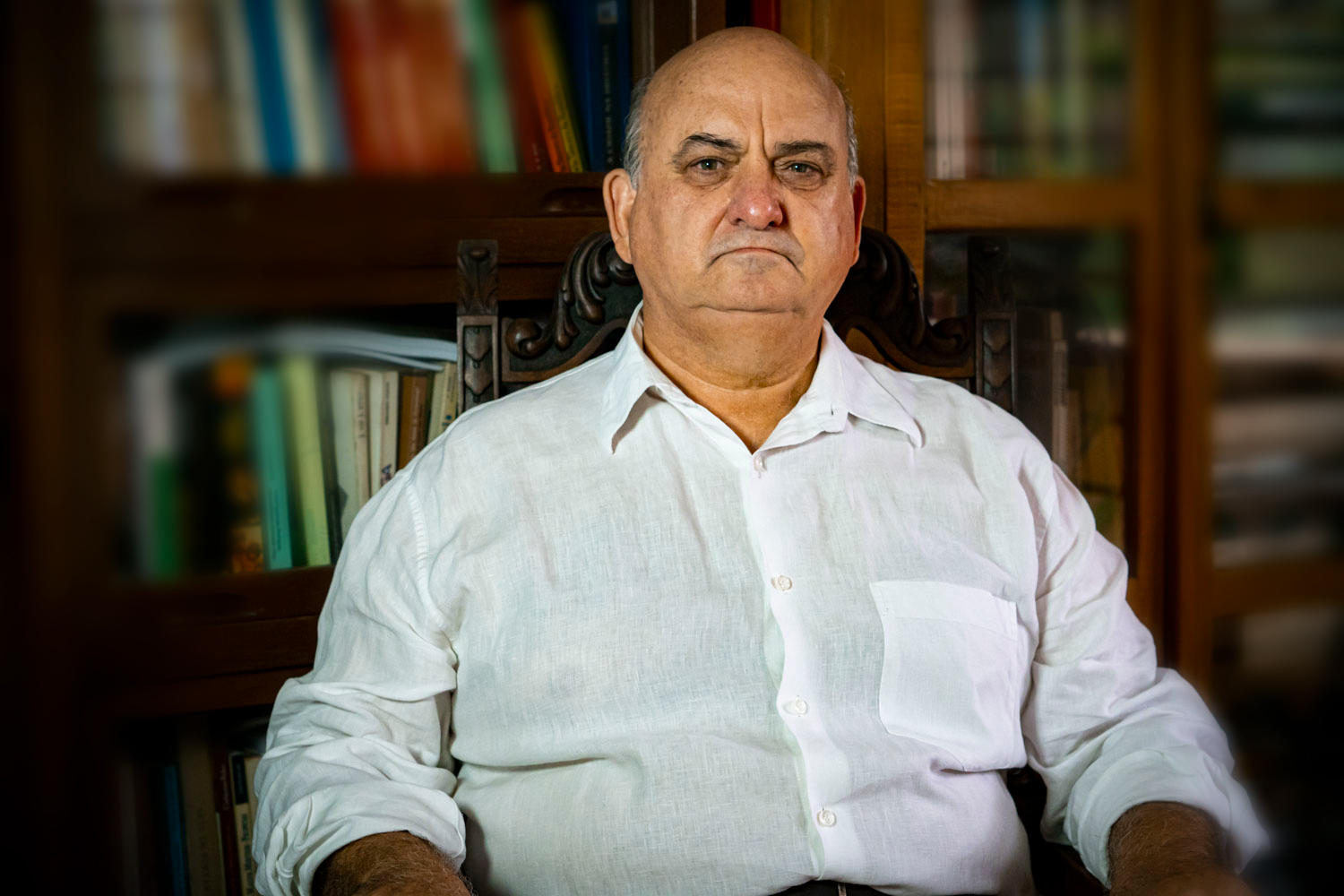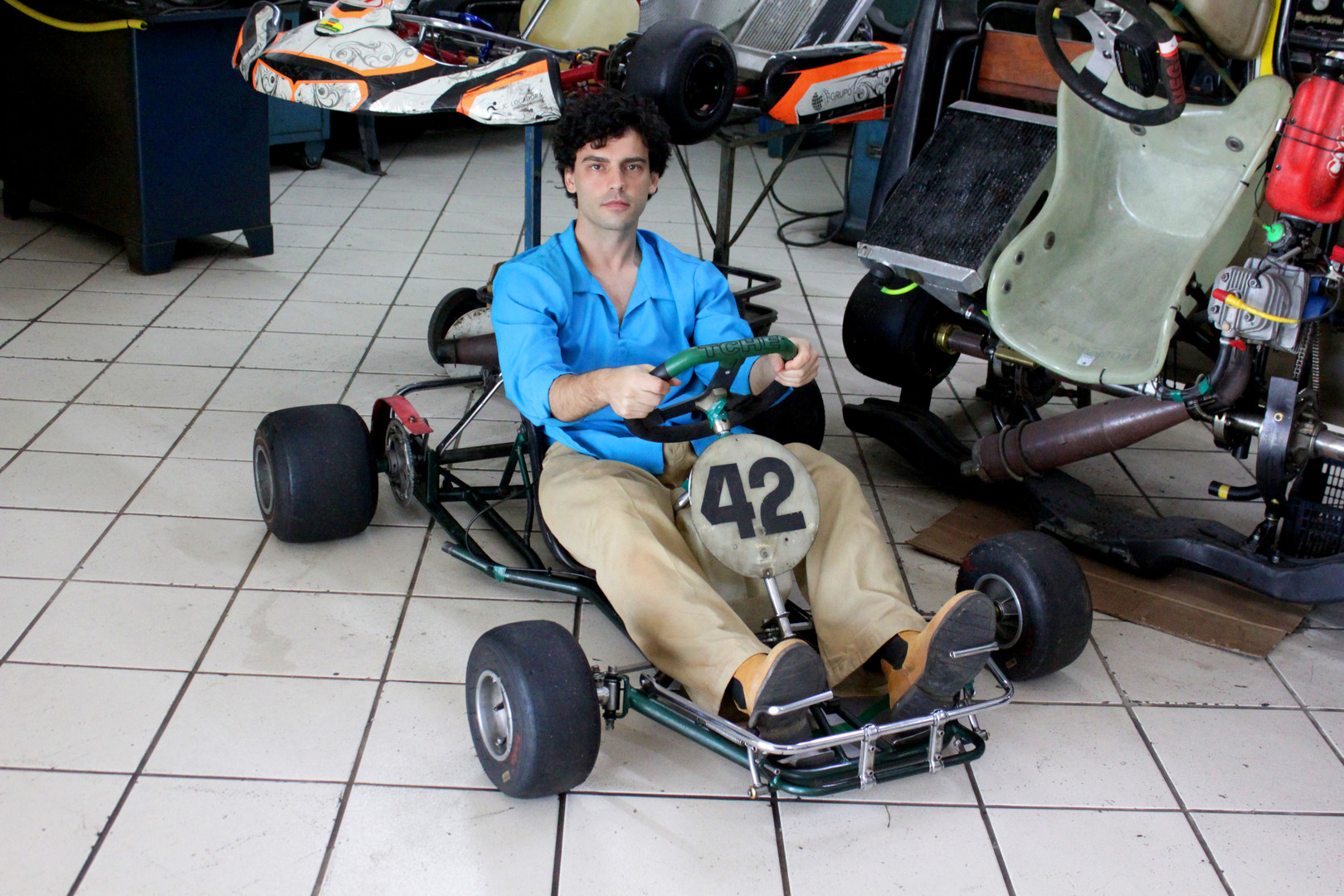Ayrton-Childhood In The Heart Of Brazil | An Interview With Vicentini Gomez

Interviewed by Sabarno Sinha
Cult Critic- Right from the start, someone would be inclined to ask this question as I am: why did you choose the figure of Ayrton Senna for your film?
Vicentini Gomez - Those who live off independent cinema in Brazil live in a tireless struggle for sponsorship and resources to make their projects come true. I am from the state of São Paulo and am located in the city of São Paulo. One day I was in the federal capital, Brasília, in search of sponsorship for the film "Duzinda" - which I still haven't managed to make. During this marathon, I met journalist Goianyr Barbosa, who is from Palmas, which is the Tocantins State capital, and he introduced me to a story that enchanted me. Ayrton spent his school vacations on his father's farm, Mr. Milton da Silva, in the city of Taipas. I tried to learn a little more about the story and I became delighted. I immediately started researching and writing the film script.
Cult Critic- The film opens with a very hopeful song, but the visuals are of a semi-arid, almost barren land. Was this juxtaposition intentional? Could you elaborate on this?
VG - The opening music is by the composer Hausenclever Petersen, a poet from Tocantins, and is not so hopeful in its lyrics. Brazilian biomes are regions that comprise large ecosystems. Brazil has six biomes: Amazon, Caatinga, Atlantic Forest, Pantanal, Pampa and the Cerrado, considered the second largest biome in Latin America and Brazil. It is known as the Brazilian savannah. The Cerrado vegetation presents shades of green, yellow, and brownish tones caused by the discoloration caused by the sunlight. When I got to know the farm where Ayrton used to spend his vacations, immediately my mind brought me back in tune with Salvador Dali's work, which in agreement with Veridiana Carvalho, the art director, we adopted for the set, costumes and photography. So, it was intentional to blend the aridity of the soil in contrast with its mountains, waterfalls and chapadas, accentuating the natural beauty of the State of Tocantins.
Cult Critic- For this film, how did you find so many resourceful people who knew Ayrton's childhood so well? Were they willing to talk on camera? Please tell us about your experience of shooting with them.
VG - Ayrton Senna is a movie character who gained prominence in formula one. In this period we tell the story, between the ages of 7 and 17, when almost nobody knew him by name, only by his nickname: Becão on the farm and Beco in the Kart. These people, who worked for Ayrton's father, Mr. Milton, were in charge of taking care of him and playing with him. So I decided to take the cowboys and boys and girls, children of the cowboys, to the leading role, who told their experiences with that naughty and determined boy who charmed everyone. During the filming, there were magical moments in which my team and I lived these Becão stories with them, always full of humor, sympathy, simplicity, and emotion. And since I also did the photography and was sitting next to the camera, it was almost an informal chat after each testimony.
Cult Critic- A documentary like yours raises the question: did you have a plan when you were filming? When it came time for film's post-production, how did you edit the monologue sequences?
VG - I did some preliminary research among the interviewees and they all told similar stories of the boy Becão, so when I wrote the script I formulated questions, which I asked everyone. I have 60 hours of captured material. During film editing, I cut as planned, one deponent talking to another, telling the same story. I made cover shots to give rhythm and movement to the testimonies.
Cult Critic- How did you decide which pieces to show in color and which in monochrome?
VG - I was making a documentary about a great personality who everyone knows the story of his heroism, his achievements, but didn't know the paths that led to these achievements. I am talking about a time from childhood to adolescence. I needed to talk about his convictions and some texts I collected in interviews, others I created. So I thought of an omnipresent being. And so we did. I gave the costume designer Madalena Machado some work to find the colors that I liked and that were in sync with Salvador Dali's colors. Many discussions with my assistant film director Diaulas Ullysses and Hugo Caserta, the art director. Once approved, I decided that when he was wearing the blue shirt, the scenery should be pale and the shirt of the film actor Rodrigo Dorado, who plays Ayrton, should be highlighted. When he was wearing the gray shirt, the whole image should be in B&W.
Cult Critic- Traditional and folk music and songs feature prominently in your film. Can you tell our readers about their significance in the film and in relation to Ayrton's life?
VG - Tocantins State folk and folkloric art are very rich: Epiphany, Catira, drumming and Suça were very much appreciated and admired by the boy Becão. The Epiphany celebrates the birth of Jesus Christ by staging the visit of the three Magi. In Catira, they dance to the sound of the noise produced by their hands and feet, in a rhythmic tap dance. Drumming is a black slave’s ritual, with the valorization and preservation of their musical culture. The agitated sound of the Súça, marked by the rhythm of drums and cuícas - a Brazilian friction drum - leads men and women to a kind of dance, in which they spin in circles.
Cult Critic- I saw that old photos are often used in documentaries, but you didn't do anything of this kind. Instead you shot short sequences with a film actor to try to capture Ayrton's life in a docudrama style. Can you detail this decision? Do you think this helped your documentary?
VG - The actor has a dramatic rhythm while the deponent has a passionate rhythm and the memories take him to different emotions when reconstituting the facts. Ayrton is not a docudrama, but the actor Rodrigo Dorado playing Ayrton allows me to put this omnipresent figure telling facts of the character's life, giving a differentiated rhythm to the film, and this constitution -without old photos- makes it possible to give more protagonism to the countrymen, transferring to them the protagonism of the film.
Cult Critic- Among long monologue pieces, you included very short ones as well. What is the reason for this change in the length of the clips?
VG - Rhythm, dynamism, humor and emotion to the narrative, exploring the multiple possibilities of the cinematographic language.
Cult Critic- You used a very peculiar sequence in the narrative, i.e., first you included the part about Ayrton's childhood and adolescence, and then you talked about his father, Mr. Da Silva. How did you decide on this sequence?
VG - Ayrton's father, Milton da Silva, popularly known as Miltão, is the one who used to take Becão to the farm, and, as he was much admired by the employees, I thought it was necessary to mention his generosity, as well as that of his mother, known to them as Dona Zaza.
Cult Critic- Ayrton in your film seems to be not only a character, but a messenger, an advisor or even a guide for the spectators and all people. What do you think?
VG - Ayrton, as a multi-champion, was always admired and was a reference in Brazilian sports. Admired and loved. I decided to put him as an omnipresent being in the film, which he always has represented for everyone after his death.
Cult Critic-I feel that in order to invoke the spirit of Brazil, show its natural beauty and increase the emotion of certain scenes, you used drones and extreme long shots of the Brazilian landscape. Would you like to comment on this?
VG - The state of Tocantins has a splendid beauty - almost untouched, little known even by Brazilians. Besides telling the story of Becão, grounding the "sertanejos/countrymen" as protagonists, my goal was to show the land´s musical culture and to present its natural beauties to the world. And so we did.
PS- Thank you for these insightful questions. Thank you for watching Ayrton-Childhood in the Heart of Brazil and talking with me about this film. I'm really honored.
- Trending tags:
- Films
- Filmmakers
- Filmmaking
- Film Festival




